

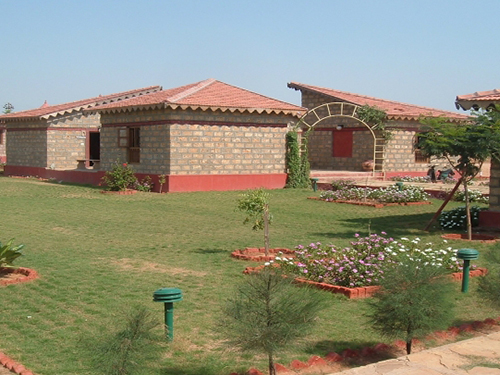
A small town just 8 km southeast of Bhuj, Bhujodi is a major textile center of Kutch, with the vast majority of the 1200 inhabitants involved in textile handicraft production. Here you can meet weavers, tie-dye artists and block printers, most of whom belong to the Vankar community. Many will let you watch them work; just ask around. Its one of the important tourist places of kutch.
About a kilometer from Bhujodi is the Ashapura Crafts Park, set up by a corporate non-profit wing to help artisans display and sell their work and organizes dance and music events on weekends. Shrujan is a local non-profit set up 40 years ago to allow women to market their work better and earn a better living from it. The Shrujan campus is an interesting place to visit in kutch, with embroidery exhibits, a production center and excellent examples of local architecture with environmental awareness in mind.
Bhujodi is a major textile center of Kutch with more than 1000 inhabitants involved in textile handicraft production. The village hosts a handicraft mela all year long with special dance and song performances on weekend. All the handicrafts including embroidery, mud work, metal work, wood work, terra-cota pots with human faces, potteries, block printing, bandhani shawls etc. are typical to Kutch area.

Ajrakhpur is known worldwide for the art of Ajrakh, block printing uses colors derived from nature, such as indigo, henna, turmeric, pomegranate, iron and mud. In some cases, the fabrics are washed up to 20 times. The printing blocks are hand-carved. Ismail Mohammed Khatri’s traditional expertise in block-printing and natural dyes was given due recognition when De Montfort University of Leicester presented this skilled craftsman with an honorary doctorate in textiles. The Khatris are a community of block-printers adept in the 3,000-year-old art of Ajrakh. The process is complex and involves 16 different processes. Ismail Mohammed Khatri has gained critical acclaim for his innovative use of natural dyes that include a mixture of camel dung, soda ash and castor oil, waste iron, myrobalan, madder, indigo, pomegranate peel boiled in water, sprays of turmeric water and the root of rhubarb.
Against the dull canvas of the Kachchh desert the rich and bold colours of the textiles are strikingly displayed. The millennia old tradition of weaving and dyeing textiles originated in this Indus Valley region in the North West of India, and is still in abundance today.
For a typical Kachchhi man or woman, their cloth is an essential everyday commodity and decoration as well as a symbol of their identity. Whether woven, embroidered, printed or tie-dyed, the textiles worn by a person in this area can reveal a multitude of details about their caste, gender, age, religious affiliation, marital status and economic standing.
The highly skilled and patterned ajrakh block-printing came to Kachchh from Sind 400 years ago when the Muslim Khatris (artisans who ‘apply colour to cloth’) settled in the village of Dhamadka. In 2001 a devastating earthquake severely damaged Bhuj, Dhamadka and other villages and towns all over the Kachchh region. In the wake of this tragedy, the Khatris were brought closer together and a new village was created to rebuild their lives and their craft production, aptly named Ajrakhpur (‘place of Ajrakh’). Today there are Khatris living and working in both villages.
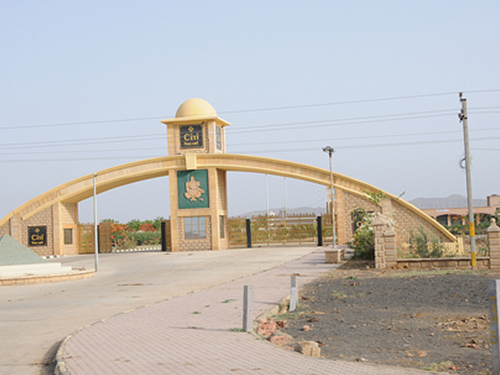
Kukma or Kookma is a village near the Bhuj town, taluka in Kachchh District of Indian State of Gujarat. It is located at a distance of 16 kilometers from Bhuj, the headquarters of Kachchh District. The kukma village is amoung the main weaving centers fo kuchchh.
Khamir is a vibrant active campus that is open to the public. It welcomes anyone who is interested to visit and spend some time learning about what we do. Khamir works to strengthen and promote the rich artisanal traditions of Kachchh district. It is major tourist attraction in Kutch.
Campus is open from 10am-6pm, Monday-Saturday.
While open year round, our campus is at its active best in the winter season, between October and March. During these six months of the year, the harsh Kachchh climate cools considerably and it is the time when most visitors arrive to sample what the district has to offer.
KHAMIR Craft Resource Centre Behind BMCB Social City Lakhond-Kukma Crossroads Post Village Kukma, Taluka Bhuj Kachchh, Gujarat 370105 India
10am-6pm
Monday-Saturday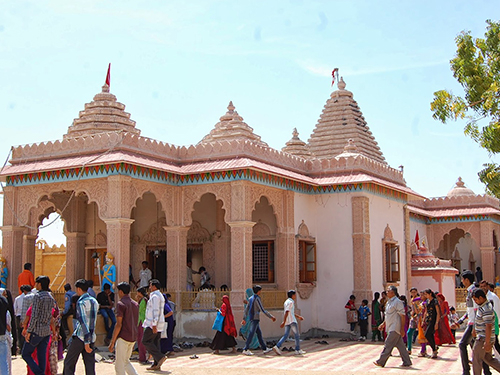
This village hosts the Dhrang mela. Dhrang is a small village in the extreme north-west of Kutchh District in Gujarat. The village is on the border to Pakistan and is about 40 km from Bhuj. Dhrang is known for the famous Saint Mekaran Dada who served the community with devotion. As his Samadhi lie in this place, his large number of followers from different parts of Gujarat and Rajasthan come to Dhran to pay homage and participate in religious rituals.
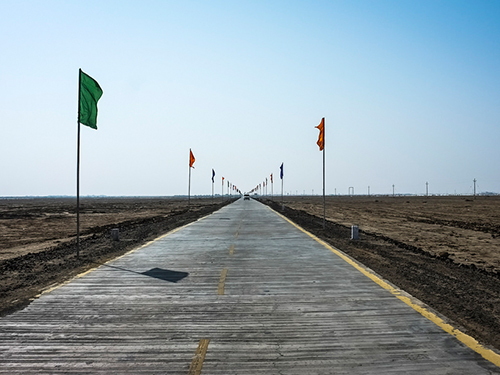
On the way to banni to bhuj take a detour to Sumrasar Sheikh to visit Kala Raksha, non- profit organization that works with a number of communities, aims to preserve and promote Kutch arts, and specialises in Suf, Rabari and Garasia Jat embroidery. The trust has a small museum, works with nearly 600 artisans from seven different communities and can arrange visits to villages to meet artisans and see them at work.
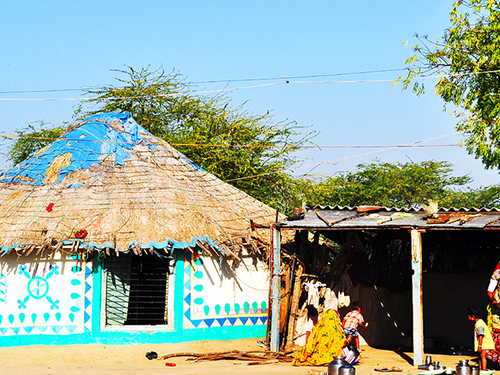
Bhirandiyara – A Beautiful Kutch Village. This small village – Bhirandiyara on the way to kutch tour. It was a cluster of about 20 houses and every member of the village is an artisan in some way. The town is most famous for its fresh MAAVO, milk reduced to a thick fudge-like consistency & sweetened with suger – best when eated hot. The local meghwal community is known for its fine embroidery & colorful mud bhungas which is major tourist attraction.
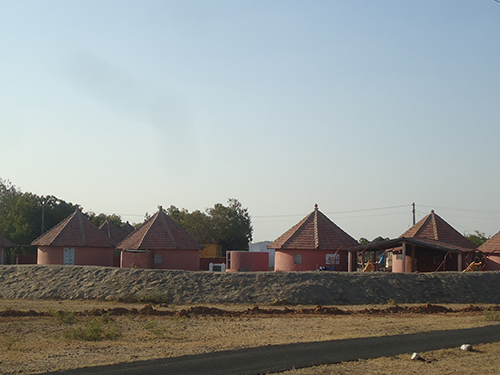
Ludiya is undoubtedly one of the most beautiful village in your kutch tour. Ludiya is located 70kms north of Bhuj in Banni districk of Kutch. It is 3 kms from Khawda. The total area of the village is about 5 square kilometers and the population is about 2000 people predominantly Muslims and a few Harijan families. (Harijan, literally ‘child of God’ was a term coined by Gandhiji to refer to the lowest caste people in the Hindu religion hierarchy). Gandhi nu Gam, inhabitated by the Meghwal Community, flaunts beautifully painted circular huts organized around the temple. Between the vibrant Kanjari Blouse of the women & the men hunched over the various corners carving wood. The village is an aesthetic delight.
The main occupation of the women folk in the village is making beautiful embroidery work and tradional crafts while the men make decorative furniture. The village has no streets. The space between two houses is used as a pathway. I was actually looking for one when I entered the village.
The houses of the village have a typical structure called bhunga with intricate decorations both inside and outside. While the outside is decorated with vibrant motifs, the inside has has clay designs with mirror work. These houses are really an architecture marvel. The thick walls keep the house cool even when the temperature reaches close to 50 degrees centigrade in summer.

For those heading northwards, Khavda, 66 kms along the principal road going north of Bhuj, is a major stop and the last place to get bottled water and fruits before heading to other destinations. Khavda village is one of the important tourist place in kutch. The center of town also has Kutchi food available. The town has excellent potters and leather craftsmen (indicating a heavy Muslim presence, as Hindus do not use leather), and ajrakh block-printing at khatrivas.
The KMVS office in Khavda sells embroidered handmade dolls and other textile products and is run by local women. Khavda is also the departure point to visit the world's largest flamingo colony, at a lake in the desert out past Jamkundaliya, where a half million flamingos stop over on their migrations every year. The flamingo colony can only be reached by camel and is best visited in the winter.
Khavda is also the departure point to visit the world's largest flamingo colony, at a lake in the desert out past Jamkundaliya, where a half million flamingos stop over on their migrations every year. The flamingo colony can only be reached by camel and is best visited in the winter (Oct. to Mar).
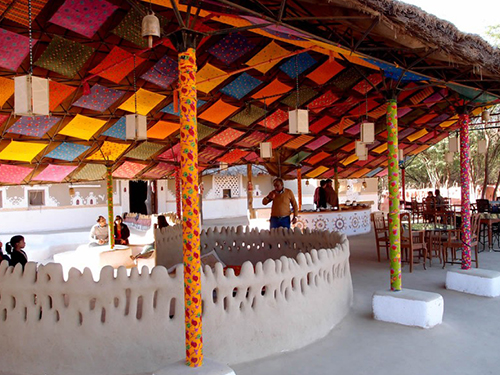
This cultural village is located in the Banni Grassland, right on the edge of the great salt desert – the Rann. The village is a cluster of houses situated close to each other. Seven to eight families live in a cluster. The village is famous for its craft like decorative mirrors, lamps, hand fans, letter boxes, wall hanging, lather, clay, wood, metal and mud work especially the exquisite silver jewellery. The artisans sell their goods directly from their artistic huts which are popularly known as Bhungas.
The Hodka village is believed to have been set up by the Halepotra clan. ‘Halepotra’ literally means the ‘son or the descendant of Halaji’, who is believed to have immigrated from Sindh. Along with the Halepotra, who are Muslims, the Hindu Meghwals have also settled in Hodka. The Halepotras – belonging to the bigger group called Maldharis, or cattle breeders – believe their ancestors originated from Saudi Arabia and reached Kutch via Iran, Baghdad and Sindh in search of pastures for their cattle.
The Meghwals- also known as Marwada Meghwals- believe their ancestors came from Marwar, Rajasthan. They are traditionally leather craftsmen and settled in Banni which was rich in livestock. Today there are 8 nokhs (sub castes) of the Meghwal community residing in Hodka.
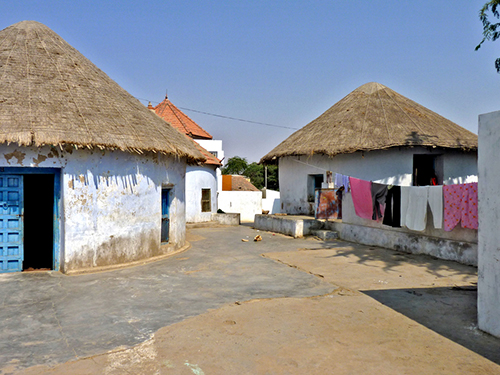
TDhordo is 80 KM for Bhuj which is Full of banni hospitality & rich culture. Dhordo village is important place in kutch tour. Dhordo is mostly occupies by the mutwa community, who hail from Sindh. The women are ingenious with needle & thread, creating an extremely fine style of embroidery called Mutwa that is patterned around tiny mirror. Visit the hospitable Miyabhai Hussein Mutwa or Mehmoodbhai Elias Mutwa to see & learn more about their exquisite mud craft, usually found along interior walls, & Mutwa embroidery.
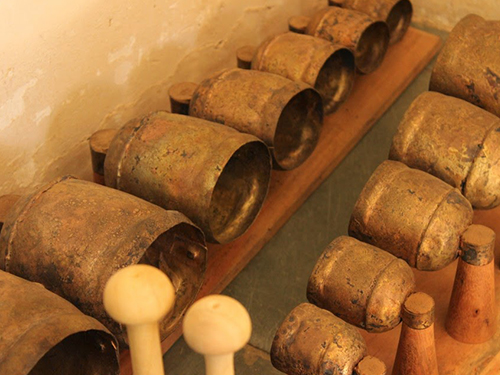
On the way to Bhuj stop by Jura & Nirona to meet master craftmen Elias Lohar or Haji Vali Mohammad to learn about the skill-intensive process of tuning the famous copper bells of Jura. Nirona, about 6 KM from Jura, is home to about half a dozen distinct craft forms. Visit Abdul Gafur Khatri, who belongs to the last remaining family of Rogan artisians, & watch him use a metal stick and some castor – oil based colors to create vivid compositions. Observe Sugar Saya or Mala Khamisa in Vadavas as they transform wood with bright lacquer colors.
Get An Experience Worth a Lifetime Book Now
Pay Now With Credit Card , Debit Card.
